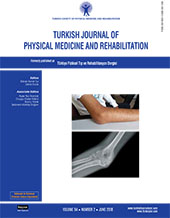Does stabilizing input pressure orthosis vest, lycra-based compression orthosis, improve trunk posture and prevent hip lateralization in children with cerebral palsy?
Patients and methods: Between December 2013 and July 2015, a total of 24 children with CP (5 boys, 19 girls; mean age 61.1 months; range 35 to 105 months) with impaired trunk control were included in this single-blind, randomized-controlled study. All were randomized to either of the three groups as the control group (received only conventional exercise therapy), the SPIO 2-hour group (worn orthosis two hours during therapy), and the SPIO 6-hour group (worn orthosis four hours in addition to two hours of wear during therapy). The Sitting Assessment Scale (SAS), Cobb angle, kyphotic angle, and Migration Index were used to evaluate the trunk posture and hip lateralization before treatment and at six months after treatment.
Results: The SAS scores improved compared to baseline in all groups. The Cobb angle and kyphotic angle showed a significant decrease at six months after treatment only in the SPIO groups, while intra-group analysis of the Migration Index did not show a statistically significant difference. Changes in the radiographic assessments were similar among the groups, except for the kyphotic angles. The kyphotic angle showed less change in the control group. Comparison of the SPIO groups showed no significant differences in terms of the variables assessed.
Conclusion: The SPIO vest improves the kyphotic posture, but not scoliosis and hip lateralization in children with CP with impaired trunk control when used in combination with the conventional therapy. Using the SPIO vest for two and six hours also yields similar outcomes.
Keywords : Cerebral palsy; lycra garments; orthosis; sitting; suit therapy; trunk posture

















